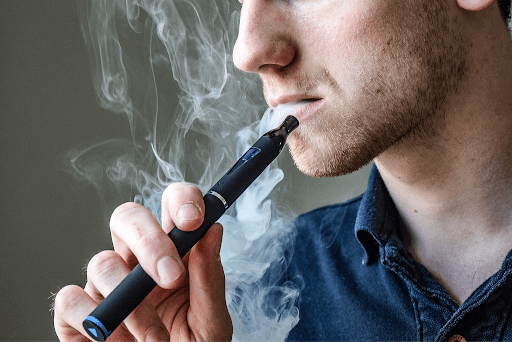A recent study conducted at the Stanford University School of Medicine found that electronic cigarettes and other forms of vaping directly correlate with a heightened risk of contracting COVID-19 for teenagers and young adults. The findings were published Aug. 11 in the Journal of Adolescent Health.
The study, written and designed at Stanford by Bonnie Halpern-Felsher and Shivani Mathur Gaiha with assistance from University of California San Francisco statistician Jing Cheng, examined the patterns of over 4,300 U.S. young adults. Their findings outline a conclusive connection between vaping and coronavirus diagnosis.
More specifically, the study’s results showed that young adults who used e-cigarettes were five to seven times more likely to be infected with COVID-19 than those who did not. Vaping damages the lungs of users, making them more susceptible to this respiratory disease. While many young adults and teens believe that their age and corresponding respiratory health will protect them from COVID-19 symptoms and deaths, Halpern-Felsher and Gaiha’s research shows that this is not necessarily the case among those using e-cigarettes and other vape devices.
In addition to the new information about COVID-19 rates, the study showed that young people who had used cigarettes and e-cigarettes in the last 30 days were five times more likely to display COVID-19 symptoms than non-users. These symptoms, generally more common in adults, include coughing, fever, fatigue and shortness of breath. The heightened risk of developing COVID-19 symptoms explains why teens who vaped were up to nine times more likely to receive testing for the disease than those who did not use them.
For Gaiha, getting these results into the public discourse presented its own set of challenges.
“As a researcher, I felt like we were asking a time-sensitive and hugely relevant question with implications for a lot of young people,” Gaiha told The Daily. With thousands of new cases being confirmed every day on a global scale, time was of the essence for the Stanford team working on this study.
In addition, this study topic wasn’t one that was easy to gather pre-recorded data on; “there are no other U.S. population-based data out there that address our research question among 13 to 24 year olds, [so] it felt somewhat like new territory.”
Halpern-Felsher and Gaiha worked closely with Qualtrics to obtain this data through online surveys conducted during the month of May. The study ended with a grand total of over 4,350 responses, with participants ranging from 13 to 24 years old hailing from all 50 states, three U.S. territories and D.C. In addition to the variety in location and age of the participants, the subjects represented people of various racial and socioeconomic backgrounds. Looking to leave few factors up to chance, survey-takers were also asked about their LGBTQ+ status, mother’s level of education, body mass index, compliance with stay-at-home orders, COVID-19 rates in the participant’s home state and regional trends in e-cigarette usage.
However, the research did not find a connection between teenage and young adult COVID-19 diagnosis and smoking only conventional cigarettes, without the use of a vaping device. A likely hypothesis for this pattern, researchers explained, is that teens and young adults typically used either both vaping devices and cigarettes or only vaping devices, but very few use exclusively cigarettes.
“We hope that the findings will encourage adolescents and young adults to never start vaping, and if [they are] vaping, to stop,” Halpern-Felsher said, reflecting on the study’s results. “The data is just another set of findings showing that vaping and smoking can put your lungs in harm’s way.”
Halpern-Fisher added that she hopes the results of the study will start conversations between parents, kids and health providers that emphasize the harms of e-cigarette usage.
Both authors want to see the findings of the study to expedite slow moving, long lasting change on a national level. Gaiha and Halpern-Felsher “hope the findings will encourage the Food and Drug Administration (FDA) to eliminate the sale of all e-cigarettes.”
Progress on this front has been happening slowly but surely. At the beginning of this year, the FDA put an official ban on flavored vapes. “I hope that youth will become aware that vaping is associated with COVID-19 and make decisions to quit that will protect their health and that of their family,” Gaiha said.
Contact Morris Raskin at mraskin20 ‘at’ stuy.edu and Sonali Muthukrishnan at sonali.muthukrishnan ‘at’ gmail.com
